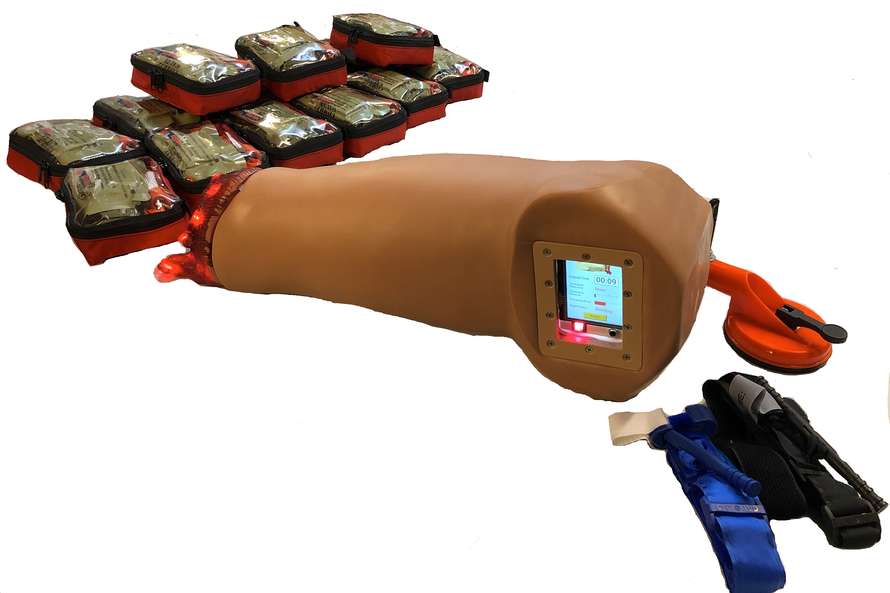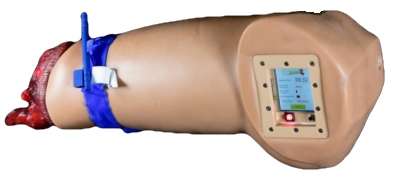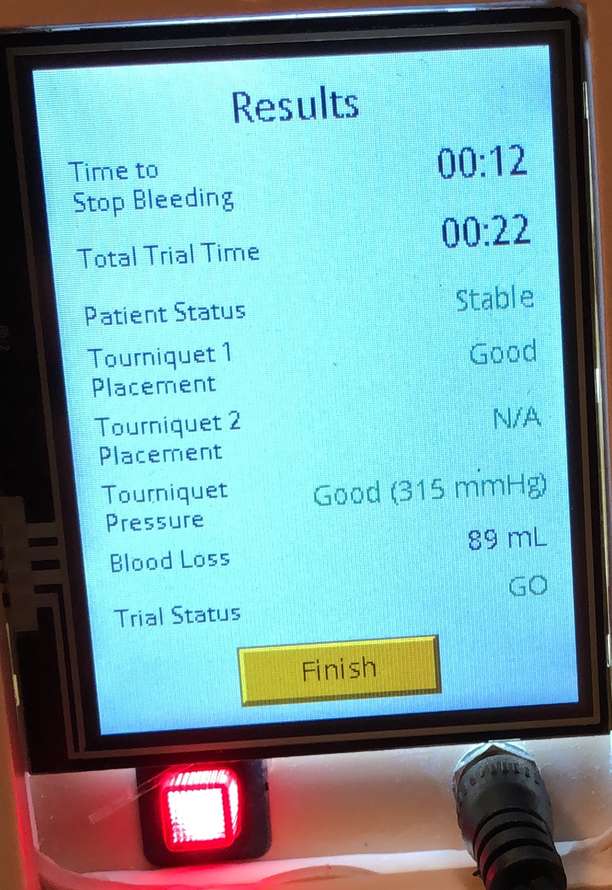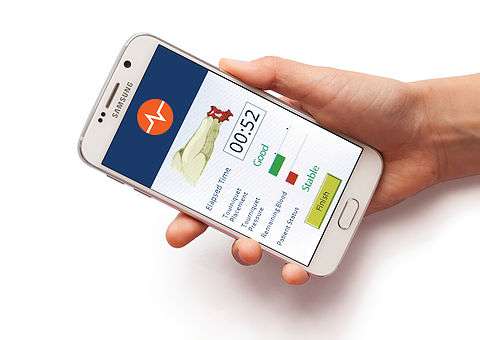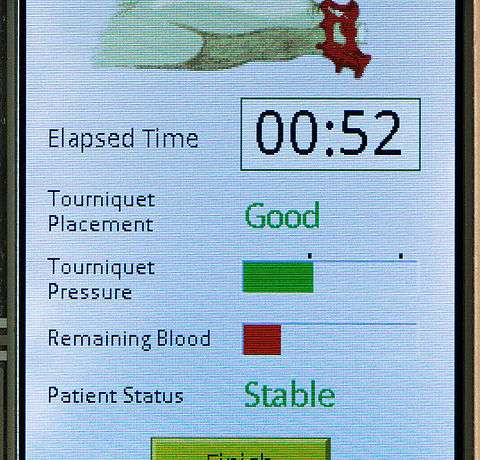HAPMED Tourniquet Trainer
AVAILABLE AGAIN IN THE THIRD QUARTER OF 2026
Learning to properly apply tourniquets.
Currently, first responders are training the use of tourniquets on themselves and others. A realistic user error that may become ingrained is not tightening the tourniquet enough due to the limiting (pain) response of the person being practiced on.
This action can unintentionally become stored in “muscle memory,” and in real-life situations, it may result in continued bleeding or improperly functioning (venous) tourniquets.
We have already received several reports that this has occurred in civilian emergency response practice. In most cases, the cause is the distribution of tourniquets to personnel without proper product training.
With the HAPMED Tourniquet Trainer as an additional training tool, several of these user errors can be corrected by making trainees aware of what a properly applied tourniquet should meet.
Firstly, the tourniquet should be tightened until only two to three fingertips can barely fit underneath the strap.
Secondly, the rod should be twisted until circulation beneath the applied tourniquet stops, in most cases, this happens after three turns (C-A-T Tourniquet).
First responders must be fully aware that they need to be able to apply a tourniquet under any circumstances:
in the dark, in difficult positions, with poor or even no visibility, without thinking, on themselves, and within seconds.
The trainee can check on the trainer’s monitor or through the smartphone app whether the tourniquet has been applied correctly when sufficient compression is registered.
